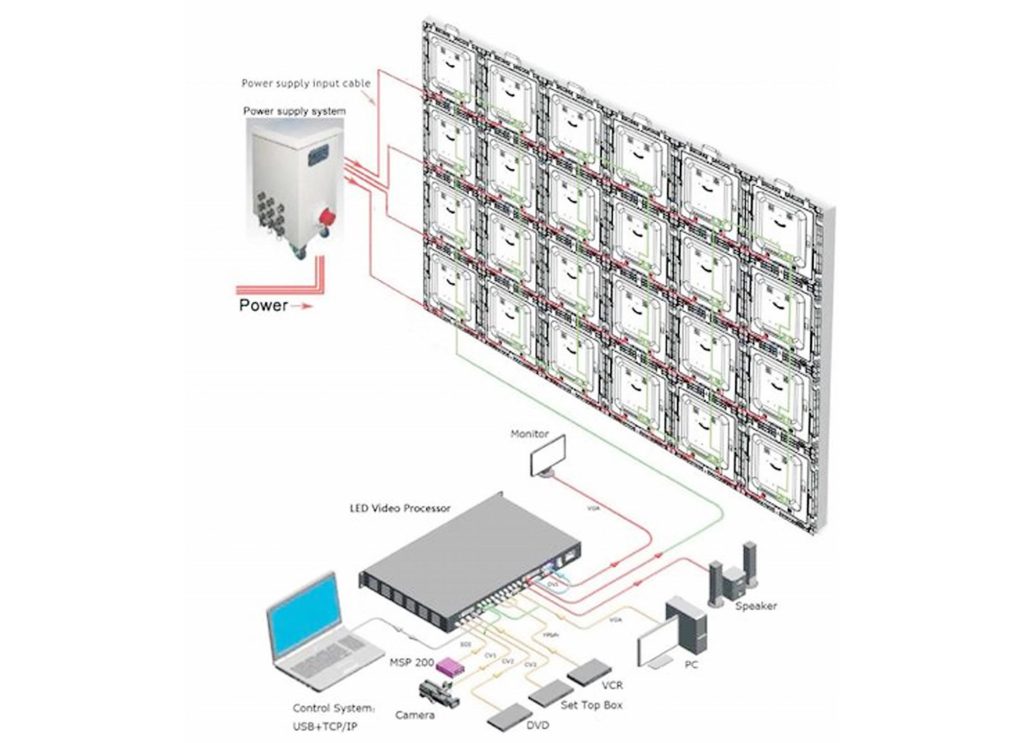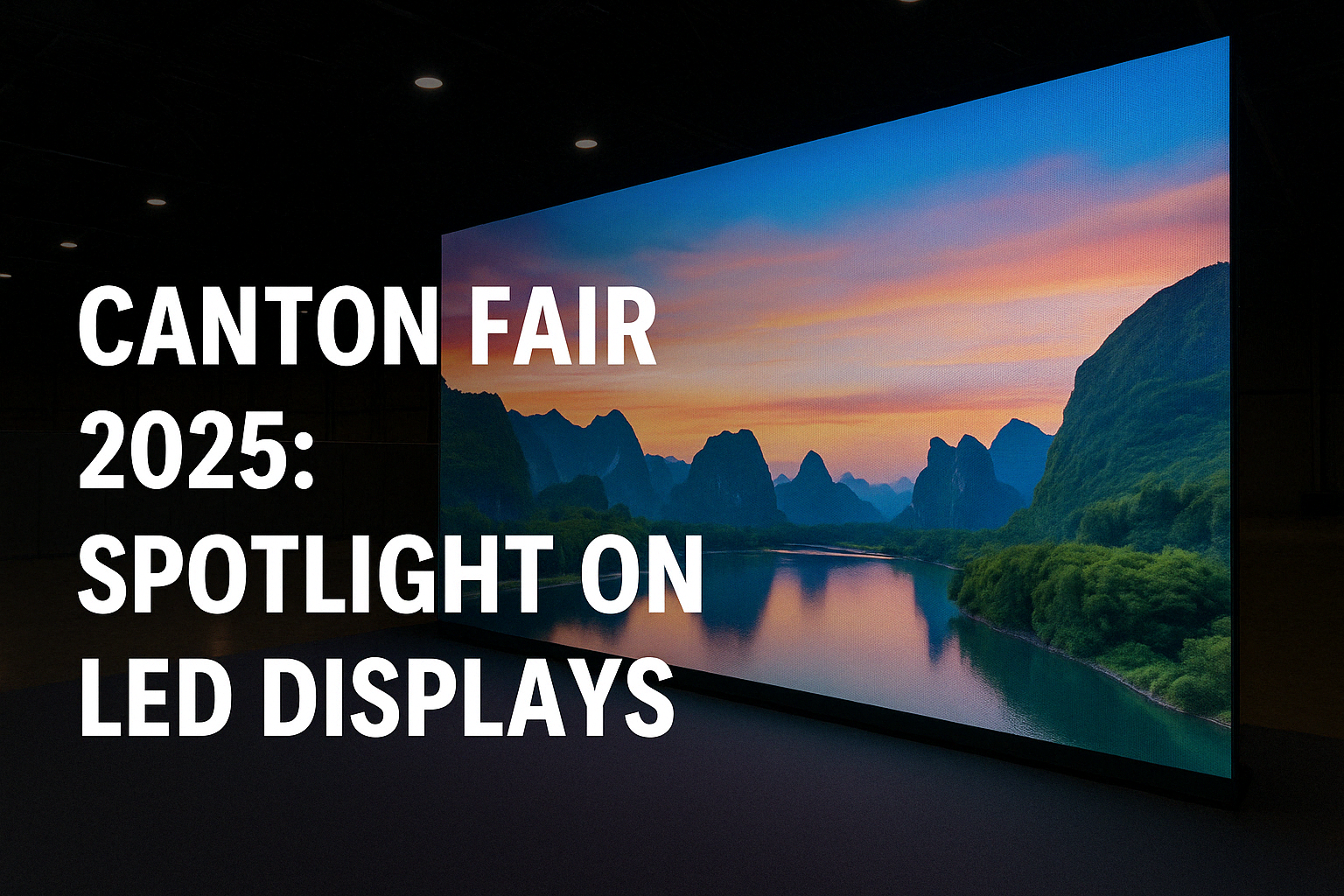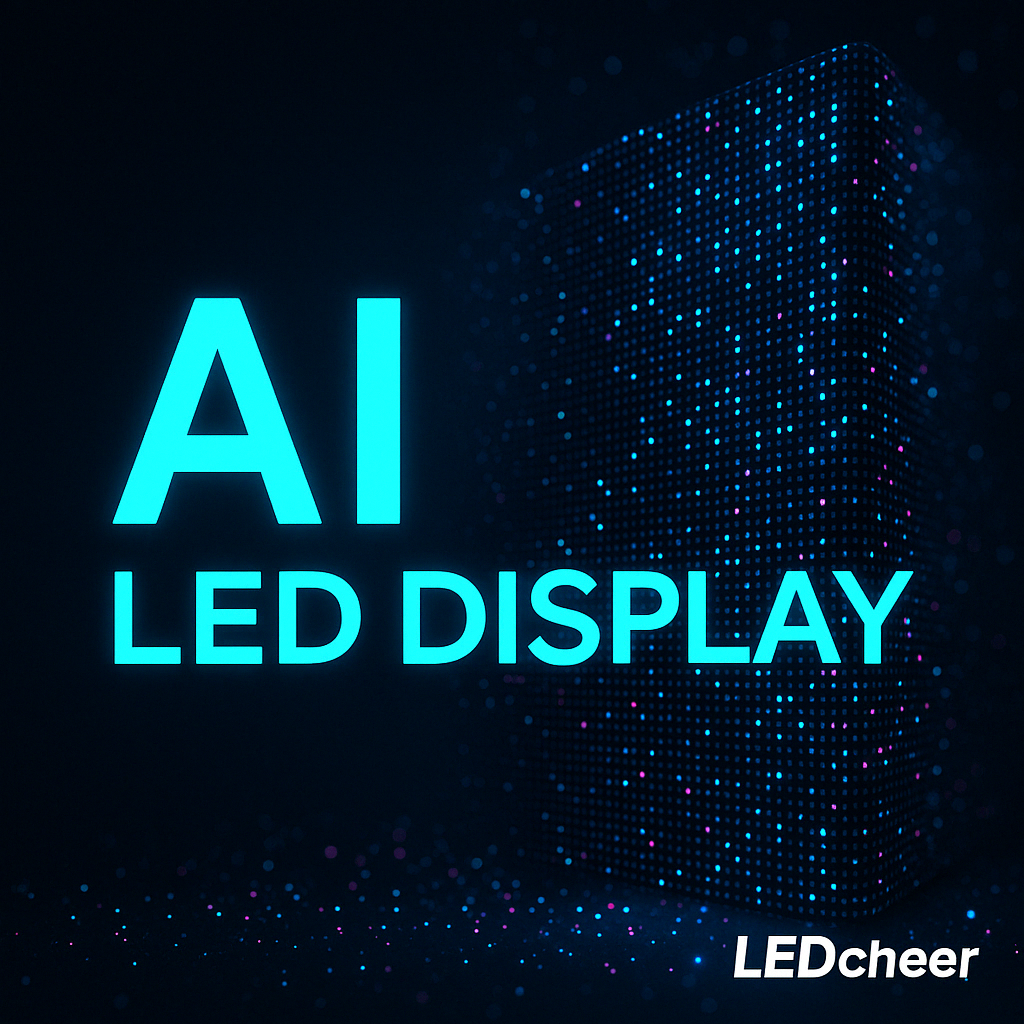2024-11-04
Outdoor LED screens include various applications, especially for outdoor advertising boards, information-shared digital board,s and entertainment billboards. Since the LED display appearance, it become more and more common and easy to see in our life. Today we will introduce you briefly to how they work.

-Structure
An outdoor LED display consists of several key components: وحدات LED: The display consists of several LED modules containing multiple light-emitting diodes. The size of each module may vary, but they are usually in a matrix format (e.g. 16×16, 32×32). The arrangement and density of these LEDs determine the resolution of the display.
-Control system
The control system manages the content which is displayed on the screen, this usually includes the computer or server that sends video and image data to the display. The control system can be programmed to display various types of content such as video, animation, and still images.
-مزود الطاقة
The power supply is necessary for any electronic products. It’s common sense that power supply function is to AC power to the DC power to run the whole screen. For outdoor LED screens, it requires much more stable power supply.
-Enclosures
Outdoor displays are housed in protective enclosures to protect them from environmental factors such as rain, dust and temperature extremes. These housings are usually waterproof and impact resistant.
Working Mechanism:
-Brightening
LED display is a matrix of LED modules or pixel tubes arranged according to the actual size required, with special display circuits, DC regulated power supply, software, frame and external decorations, etc. assembled into the LED display.
-Pixel Configuration
The small size of LEDs allows them to be placed close together to form pixels Each pixel in an LED display consists of multiple LEDs (typically three for RGB). The screen can display different colors and complex images and videos by controlling each LED lamp bead.
Content Delivery: The control system generates the content that is sent to the LED module. This content can be created using specialized software that allows the user to design layouts, animations and video sequences. The control system converts this content into signals that indicate which LEDs should be lit and to what intensity.
Signaling: Data from the control system is transmitted to the display via a variety of methods, including a wired connection (e.g. Ethernet) or a wireless connection. The signals instruct each module how to display the content according to its position in the overall display.
Benefits of Outdoor LED Displays:
High Visibility: Outdoor LED displays are bright enough to be viewed in direct sunlight, making them ideal for advertising and public announcements. Dynamic content: These displays allow for quick and easy content changes, allowing for real-time updates and dynamic advertising campaigns.
متانة: Designed to withstand harsh weather conditions, outdoor LED displays are durable and a cost-effective solution for long-term use.
Energy Efficiency: Modern LED technology is energy efficient, consuming less power than traditional display technology, and is more environmentally friendly.
خاتمة: Outdoor LED displays are a powerful communication and advertising tool, combining technology and creativity to effectively engage audiences. Their ability to deliver vivid visuals in a variety of conditions makes them a popular choice for businesses and organizations looking to increase their visibility and impact.







